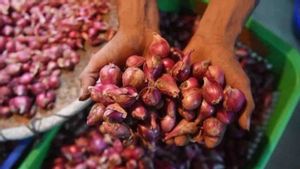YOGYAKARTA For breastfeeding mothers, the smoothness of breast milk (ASI) is important because it is adequate for the baby's nutrition. However, sometimes breast milk does not come out smoothly. To overcome this, one of the efforts that can be done is to eat leaf cooking to facilitate breast milk so that nutritional intake for the baby is fulfilled.
The leaf cooking recipe for breastfeeding is often chosen because it is a natural way to help smooth breast milk. Even this traditional recipe is widely used by the public to breastfeed breast milk. Here are some leaves that can be boiled to breast milk.
Kelor leaves are widely used for traditional medicines, including helping breast milk. This happens because of the presence of a phyolesterol compound that is able to stimulate breast milk products in the mother. The method of boiling is also simple, simply insert the hyacint leaves that have been cleaned, then boil with mineral water, but don't boil. After that, drink the boiled water of the Morbung leaves regularly.
Daun katuk is one of the plants that is often found in Indonesia. These leaves contain carotene, a-tokoferol, and ascorbic acid which can help promote breast milk. However, when consuming these leaves, they must be supported by a good diet and a healthy lifestyle so that the benefits can be obtained optimally.
Quoted from the website of Dr. M. Ashari Pemalang Hospital, a doctor as well as an activist for breastfeeding Fighters, Ameetha Drupadi explained that these leaves contain folic acid, Vitamin A, B, C so that they can add prolactin hormones that can help produce breast milk.
These leaves are widely used in various medicinal ingredients, including helping to facilitate breast milk. Traditional leaves can be consumed by brewing or mixing them in food. Even adas is also eaten a lot directly or mentally to be a salad or made up.
The efficacy of getting up and down is mentioned in a journal published by the Bogor Agricultural Institute (IPB). The content of these leaves is triggering the hormone lactating. These leaves contain saponin, flavonoid, polyphenol, prolacticine, and oxytocin. In addition, there are iron and carotenoid content.
Although not much is found, the content of red spinach caroteins, chlorophylles, and saponons makes these leaves have many benefits. Not only on the leaves, the stems are found to be alkaloids, flavonoids, and polyphenols. The red spinach plant is also able to breastfeed on breastfeeding mothers.
Curry leaves are one of the vegetables from India. In addition to being used in various culinary dishes, kari leaves are used to support health, one of which is breastfeeding. This happens because kari leaves contain various minerals that help the milk production process in breastfeeding mothers.
https://voi.id/lifestyle/311118/bantah-sindir-venna-melinda-di-akun-tiktok-ferry-irawan-murni-menghibur-masyarakat
Pepaya leaves do taste bitter, but can help increase breast milk production. These leaves contain quercetin which help activate the hormone prolactin. In men, these hormones help produce sperm, while in women it helps increase iasi production.
That's information related to leaf cooking to facilitate breast milk. Visit VOI.ID to get other interesting information.
The English, Chinese, Japanese, Arabic, and French versions are automatically generated by the AI. So there may still be inaccuracies in translating, please always see Indonesian as our main language. (system supported by DigitalSiber.id)













